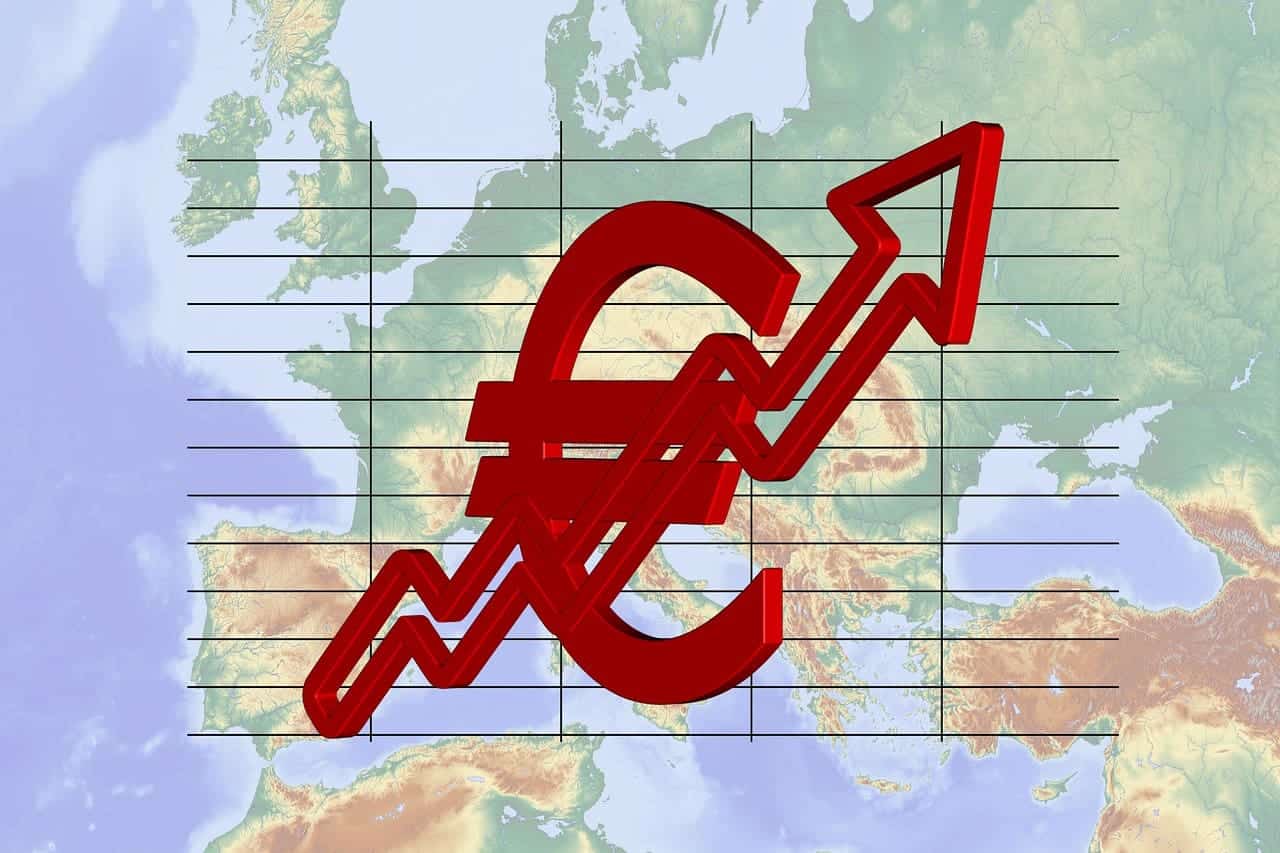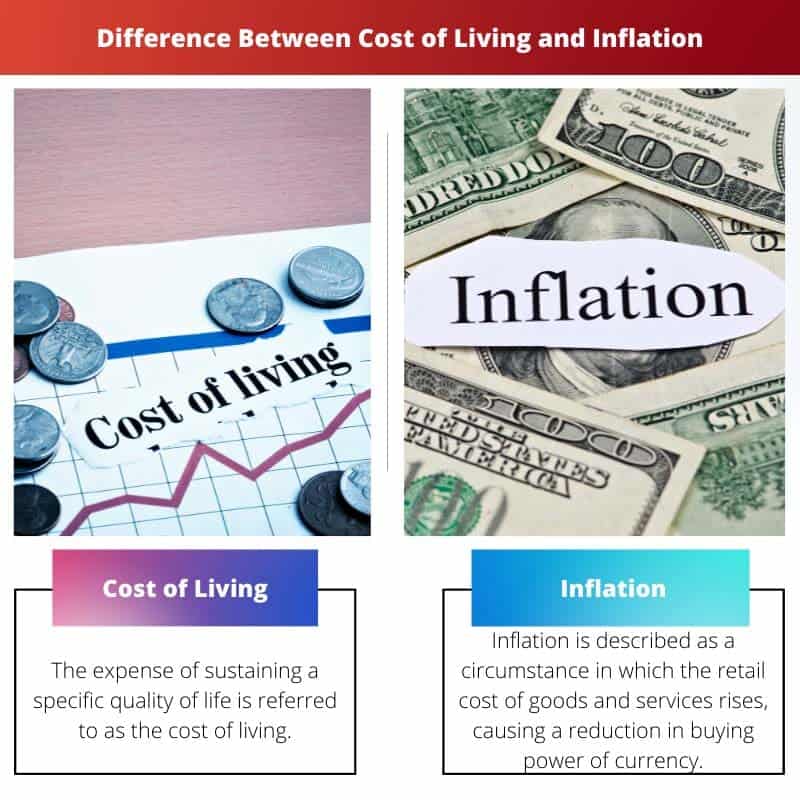The cost of living reflects the overall expenses required for a standard of living, encompassing goods and services. Inflation, on the other hand, is the general increase in prices of goods and services over time. A rise in inflation leads to an increase in the cost of living, impacting consumers’ purchasing power.
Key Takeaways
- Cost of living measures the expenses required to maintain a certain standard of living, while inflation is the overall increase in prices of goods and services.
- The cost of living varies by geographic location, whereas inflation affects an entire economy.
- Inflation can lead to an increased cost of living, making it more expensive for people to maintain their desired lifestyle.
Cost of Living vs Inflation
The cost of living refers to the amount needed to maintain a certain standard of living, including housing, food, transportation, and healthcare. Inflation is the rate at which the overall price level of goods and services in an economy increases over time.

The cost of living is indeed the quantity of cash required to pay initial expenses such as accommodation, nutrition, taxation, and medical care in a certain location and time period.
The cost of living is frequently used to evaluate the expense of residing in one city to another. Earnings determine the cost of living.
Inflation, on the other hand, is described as a circumstance in which the retail cost of goods and services rises, causing a reduction in buying power in the middling market sector or, in other words, a decrease in the purchasing power of the nation’s currency.
Comparison Table
| Feature | Cost of Living | Inflation |
|---|---|---|
| Definition | The overall expense of living in a particular place, including costs of housing, food, transportation, healthcare, and other necessities. | The rate at which the general level of prices for goods and services in an economy increases over time. |
| Scope | Measures the cost of living for a specific individual or household in a specific location. | Measures the average change in prices across an entire economy, affecting everyone within that economy. |
| Factors affecting | Housing prices, transportation costs, food prices, energy costs, taxes, income levels, lifestyle choices, etc. | Government spending, changes in money supply, global events, supply chain disruptions, etc. |
| Impact | Affects a person’s buying power and standard of living. A higher cost of living means needing to earn more to maintain the same lifestyle. | Affects the value of money and purchasing power across an entire economy. Higher inflation decreases the buying power of everyone’s money. |
| Measurement | Typically measured using cost of living indices, like the Consumer Price Index (CPI). | Measured by calculating the percentage change in a price index like the CPI over a specific period. |
| Control | Individuals have limited control over the cost of living in their area. | Central banks and governments have some influence over inflation through monetary and fiscal policies. |
| Focus | Focuses on the total cost of living for specific needs and wants. | Focuses on the average change in prices for a basket of goods and services representative of an economy. |
What is the Cost of Living?
The cost of living refers to the amount of money needed to sustain a certain standard of living, covering essential expenses such as housing, food, transportation, healthcare, and other necessities. It is a comprehensive measure that takes into account various factors influencing the overall financial requirements for individuals or families.
Components of Cost of Living
- Housing Costs: This includes expenses related to rent or mortgage payments, property taxes, home insurance, and maintenance.
- Food and Groceries: The cost of purchasing food items and groceries essential for daily sustenance.
- Transportation: Expenses associated with commuting, including fuel, public transportation fares, maintenance, and insurance for vehicles.
- Healthcare: The cost of medical services, insurance premiums, and out-of-pocket expenses for maintaining health.
- Utilities: Payments for essential services like electricity, water, heating, cooling, and internet.
- Education: If applicable, expenses related to education, including tuition, books, and other educational materials.
- Entertainment and Recreation: Costs associated with leisure activities, entertainment, and recreational pursuits.
- Miscellaneous Expenses: Other miscellaneous costs that contribute to the overall standard of living, such as clothing, personal care items, and unforeseen expenditures.
Factors Influencing Cost of Living
- Geographical Location: Different regions or cities may have varying costs of living due to differences in housing prices, taxes, and overall economic conditions.
- Inflation: Changes in the general price level of goods and services can impact the cost of living, with inflation leading to an increase in overall expenses.
- Income Levels: The individual or household income plays a crucial role in determining the affordability of the cost of living.
- Lifestyle Choices: Personal preferences and lifestyle choices can influence discretionary spending, affecting the overall cost of living.

What is Inflation?
Inflation is an economic phenomenon characterized by a sustained increase in the general price level of goods and services in an economy over a period of time. It results in the decline of purchasing power as each unit of currency buys fewer goods and services. Inflation is expressed as an annual percentage, representing the rate at which prices are rising.
Causes of Inflation
- Demand-Pull Inflation: Occurs when aggregate demand for goods and services exceeds their supply, leading to an increase in prices.
- Cost-Push Inflation: Arises when the costs of production, such as wages or raw materials, increase, causing businesses to pass on these higher costs to consumers.
- Built-In Inflation: Also known as wage-price inflation, it occurs when workers demand higher wages, and businesses subsequently raise prices to cover increased labor costs.
- Monetary Inflation: Caused by an increase in the money supply, due to central banks printing more money or implementing loose monetary policies.
Effects of Inflation
- Reduced Purchasing Power: As the general price level rises, the purchasing power of money declines, meaning that the same amount of money buys fewer goods and services.
- Uncertainty: High or unpredictable inflation can create uncertainty in the economy, making it challenging for businesses and individuals to plan for the future.
- Interest Rates: Central banks may adjust interest rates to control inflation. Higher interest rates can be used to cool off an overheating economy and reduce inflation.
- Distorted Price Signals: Inflation can distort price signals, making it difficult for businesses to make informed decisions about production and investment.
Measurement of Inflation
- Consumer Price Index (CPI): Measures the average change over time in the prices paid by urban consumers for a basket of consumer goods and services.
- Producer Price Index (PPI): Tracks changes in prices received by domestic producers for their goods and services over time.
- GDP Deflator: Compares the current GDP to the nominal GDP to reflect the extent to which prices have changed over time.

Main Differences Between Cost of Living and Inflation
- Definition:
- Cost of Living: Reflects the overall expenses required for a certain standard of living, encompassing various goods and services.
- Inflation: Represents the general increase in prices of goods and services over time, leading to a decline in purchasing power.
- Scope:
- Cost of Living: Encompasses a broad range of living expenses, including housing, food, transportation, healthcare, and other necessities.
- Inflation: Focuses specifically on the rise in the general price level of goods and services in an economy.
- Measurement:
- Cost of Living: Often assessed through various indices that consider the prices of a basket of goods and services relevant to daily life.
- Inflation: Measured using indices such as the Consumer Price Index (CPI), Producer Price Index (PPI), or GDP Deflator to track changes in price levels.
- Impact on Individuals:
- Cost of Living: Directly influences the amount of money individuals or households need to maintain a particular standard of living.
- Inflation: Reduces the purchasing power of money, affecting how much can be bought with a specific amount of currency.
- Factors Influencing:
- Cost of Living: Influenced by geographical location, lifestyle choices, income levels, and various living expenses.
- Inflation: Can be caused by factors such as increased demand (demand-pull), rising production costs (cost-push), built-in inflation (wage-price), or monetary policies affecting the money supply.
- Policy Considerations:
- Cost of Living: Used for personal financial planning, salary negotiations, and assessing the economic well-being of individuals or regions.
- Inflation: A key consideration for central banks and policymakers in implementing monetary policies to achieve price stability and economic growth.





